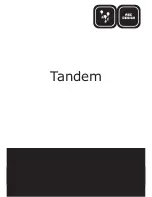
7
Fig. 8. Schematic and electrical diagram of installation no 6.
4.7 Double heater system - makes it possible to provide additional solar energy for the boiler heater with the use of a mixing pump - scheme no 7
Controlling the P collector pump
Similarly as in scheme no 1 - description in point 4.1.
Controlling the C circulation pump
Similarly as in scheme no 2 - description in point 4.2.
Controlling the K mixing pump
The K mixing pump will be switched on if the T2 temperature at the collector heater gets higher by the “
Temperature difference ON add. pump, valve”
value than the T4
temperature in the boiler heater. The pump will remain switched on until the difference in temperatures (T2-T4) falls below the set value and the temperature in the boiler heater
reaches the set allowable value of “
Max. temp. T4 OFF heat source”
.
Fig. 9. Schematic and electrical diagram of installation no 7.
4.8 Double heater system - makes it possible to provide additional solar energy heating for the boiler heater with the use of a circulation return - scheme no 8
Controlling the P collector pump
Similarly as in scheme no 1 - description in point 4.1.
Controlling the C circulation pump
Similarly as in scheme no 2 - description in point 4.2.
Controlling the U three-way valve.
The three-way valve will be switched into the A heater direction if the T2 temperature at the collector heater gets higher by the “
Temperature difference ON add. pump, valve”
value
than the T4 temperature in the circulation return. The valve will switch into the direction of A heater if the difference in temperatures (T2-T4) falls below the set value. Else, circulation
return will always be directed to the B boiler heater.
Fig. 10. Schematic and electrical diagram of installation no 8.




































